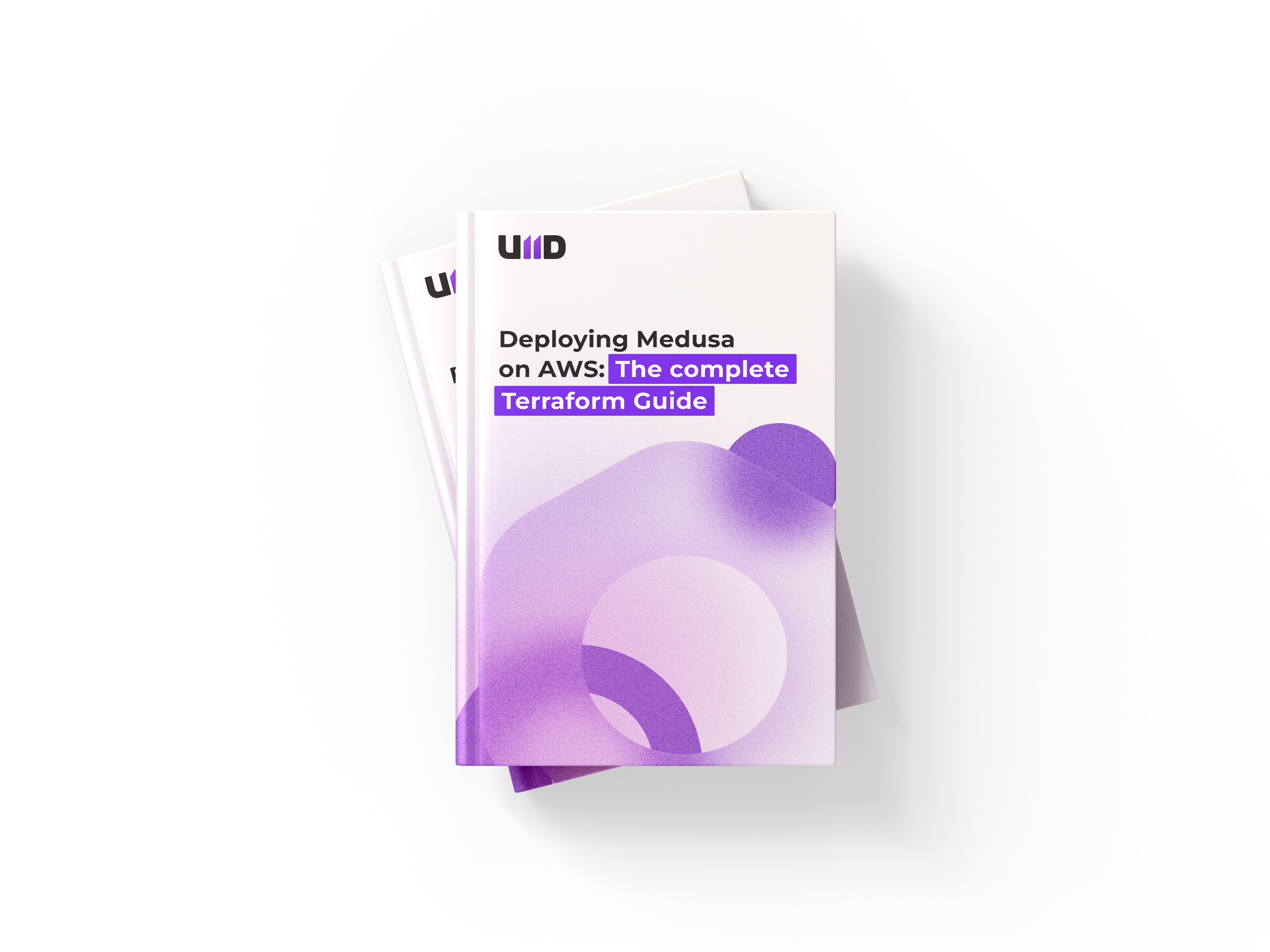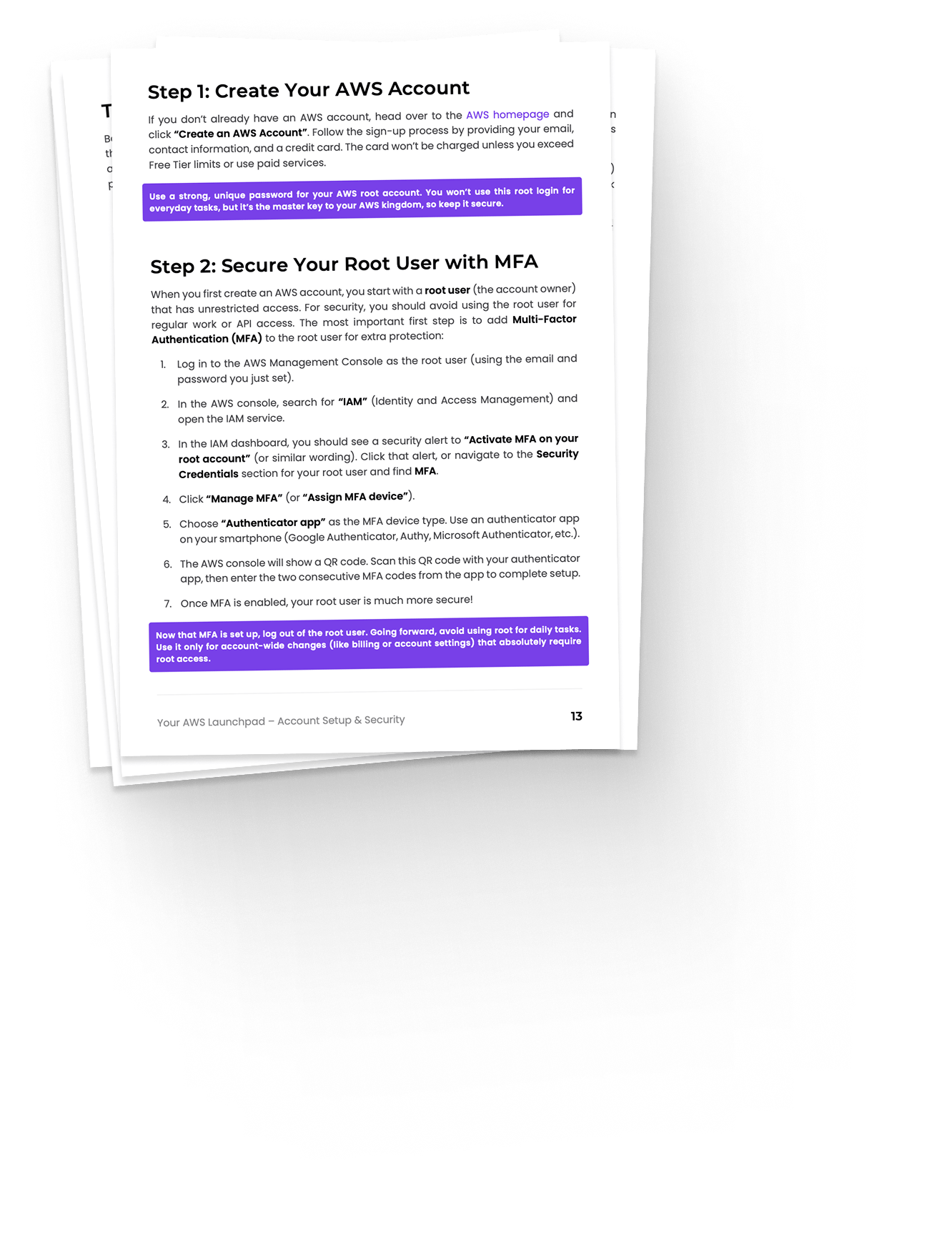Your AWS Launchpad
– Account Setup & Security
Create your AWS account, secure it with MFA, and set up an IAM user specifically for Terraform.
Introducing Terraform
– Your Infrastructure Supertool
Install Terraform locally and understand its basic commands and workflow.
Deploying the Medusa Backend
with the Terraform Module
Use the u11d-com/Medusa/aws module to provision the core AWS infrastructure for the Medusa backend.
Preparing Your Medusa Frontend
for AWS Deployment
Set up the Next.js storefront starter, apply recommended Docker configurations, build the frontend Docker image locally.
Pushing to ECR and Deploying
the Frontend Service
Authenticate Docker with AWS ECR, tag and push the frontend image, update Terraform configuration, and deploy the storefront.
Monitoring with AWS
CloudWatch
Learn the basics of monitoring logs, metrics, and setting alarms for your deployed application.












